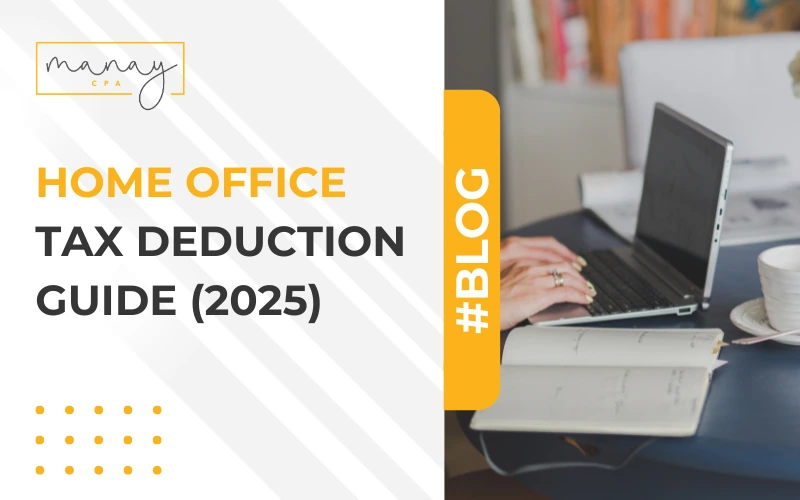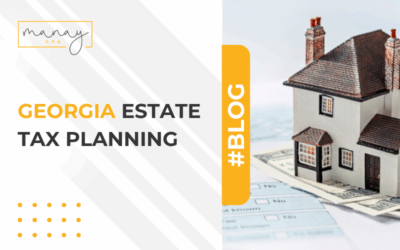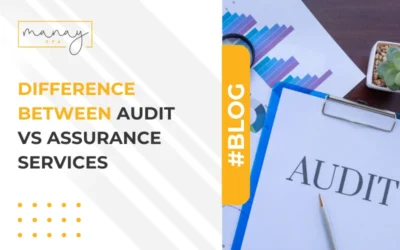Home Office Tax Deduction Guide (2025)

Many small businesses operate out of the owners’ homes, as it is more economical than renting a place. This trend is more common among solopreneurs and small businesses with remote employees. Besides saving on rental and utility costs, these owners can also claim home office deductions on their taxes, which can lead to substantial savings. However, the eligibility for these deductions is narrow under the Tax Cuts and Jobs Act (TCJA).
This guide provides detailed information on the home office tax deduction, including eligibility requirements and the expenses that qualify for it.
Table of Contents
ToggleWhat Is the Home Office Tax Deduction?
When an individual works from home, certain expenses can be deducted from their taxes, provided the individual meets the qualification requirements laid down by the Internal Revenue Service (IRS).
IRS Definition of a Home Office
According to the IRS, a home office is a room or a place that you use regularly and exclusively for your business. It can be a room, a specific structure, your garage, or any other space. Also, you must use that part of your home for the following purposes:
- Regularly, as the principal place of business.
- A place where you meet or deal with customers through the regular course of your business. For example, a doctor meeting patients in a room of the house.
- A separate structure that’s not attached to the home and is used for trade or business.
- A room or area regularly used for storing inventory related to your business.
- When your home is used as a daycare facility.
Note that you can’t claim deductions if you use a room or structure for both business and personal purposes.
Who Can Claim the Home Office Deduction in 2025?
The home office deduction cannot be claimed by employees who get a W-2 form from an employer, even if the employee works remotely from home. On the other hand, it can be claimed by freelance workers and independent contractors who are responsible for paying their Social Security and Medicare taxes.
Types of Taxpayers Who May Qualify
After the Tax Cuts and Jobs Act (TCJA), the home office deduction is available for:
- Freelancers and gig workers.
- Sole proprietors.
- LLC members who are taxed as sole proprietors or partnerships.
- Professionals, like therapists and designers, who work from home.
Who Qualifies for the Home Office Deduction?
Not all taxpayers mentioned above may qualify, as the IRS lays down two key requirements – exclusive and principal.
Exclusive and Regular Use Requirement
One of the key requirements is that the room or part of the house that’s claimed as a deduction must be regularly used for running the business. More importantly, it must be used exclusively for business purposes only and not for personal use.
Principal Place of Business Rule
The second rule is that the place that’s claimed as a deduction must be the principal place of business. This means the place must be used exclusively for:
- Performing managerial or administrative tasks.
- Meeting clients in the normal course of your business.
- A place for storing inventory, if that’s the nature of your business.
Business vs. Personal Use: What’s Allowed?
One of the most common causes of rejection is when a place is used for both personal and business purposes. For example, let’s say you are a remote training consultant and use a room and screens for conducting training programs. You can claim this room and screen as deductions for your business operations. However, if you use this room and screen to watch movies over the weekend, it becomes a mixed-use property, and cannot be claimed as a deduction.
Home Office Deduction for Remote Employees
Given the growing practice of remote work, can employees who work remotely from home throughout the year claim office deduction expenses? No, according to the TCJA.
Can W-2 Employees Deduct Home Office Expenses in 2025?
According to the TCJA, W-2 employees cannot deduct home office expenses. Since this law applies until the end of 2025, W-2 employees cannot claim this deduction in 2025.
Exceptions for Certain Occupations or Contractual Arrangements
In some rare cases, W-2 employees can claim a deduction. One such case is when an employee has dual status, where some part of the work is completed as a full-time employee and other parts of the work are completed as an independent contractor. Only the independent contractor portion qualifies for the deduction. Also, when an employee must work from home as a condition of employment, then that employee may qualify. However, these are extremely rare scenarios.
Alternative Benefits Employers Can Offer Instead
Employers can use an accountable plan to reimburse home office expenses. Accountable plans are not limited to S-Corp owners; any employer—including corporations, partnerships, and sole proprietors—can establish an accountable plan for their employees. If the plan meets IRS requirements (business connection, substantiation, and return of excess), reimbursements are not taxable to the employee and are not reported on Form W-2.
If the employer provides a monthly home office stipend or reimburses expenses under a nonaccountable plan (i.e., without substantiation or return of excess), the amount is taxable to the employee and must be reported as wages on Form W-2.
Employers can cover specific costs tax-free only if the arrangement is structured as an accountable plan and the expenses are properly substantiated.
Implementing alternative benefits and claiming home office tax deductions can be tricky, and this is where experienced professionals from Manay CPA can help.
Home Office Deduction for Self-Employed Individuals
When compared to W-2 employees, self-employed individuals are eligible for home office deductions, provided they follow the existing provisions and file the right forms.
Filing with Schedule C
Self-employed individuals, like sole proprietors and single-member LLCs, must file Schedule C (Form 1040) to claim home office deductions. This form has a section for home office details, where the individual must provide information regarding the square footage, expense type, and usage details.
Standard Method vs. Simplified Method
There are two ways to calculate the home office deduction, and they are the standard and simplified methods:
- Simplified method – In this method, you can claim a flat rate of $5 per square foot, with a maximum limit of 300 square feet.
- Standard or regular method – In this method, the actual expenses related to the home office must be claimed. However, you must maintain records to claim any of these deductions under the standard method.
In general, if you don’t want to track expenses or don’t have the records, opt for the simplified method. In all other cases, go for the standard method, as this can accurately compensate your expenses.
If you use the actual expense (standard) method, you must complete and attach Form 8829 (Expenses for Business Use of Your Home) to your Schedule C (Form 1040). If you use the simplified method Form 8829 is not required.
The home office deduction is limited by the gross income from the business use of the home. If your actual expenses exceed this limit, the excess can be carried forward to future years when using the actual expense method. However, under the simplified method, any unused deduction cannot be carried forward.
Direct vs. Indirect Expenses Explained
There are two kinds of expenses that you can claim – direct and indirect. As the name suggests, direct expenses are those that are directly associated with your home office, like repairs, upgrades, etc. On the other hand, when you apportion a part of your expenses to your home office, that’s an indirect expense. This can include rent or mortgage, utilities, insurance, etc.
Mortgage interest, real estate taxes, and casualty losses are deductible as itemized deductions on Schedule A, even if you do not claim a home office deduction. If you use the actual expense method, you must allocate these expenses between business and personal use.
Direct expenses are those that relate only to the home office (such as repairs to the office itself) and are fully deductible (subject to the gross income limitation). Indirect expenses (such as utilities, rent, insurance) must be apportioned based on the percentage of your home used for business. Unrelated expenses (such as lawn care for non-business areas) are not deductible as home office expenses.
Only homeowners may claim depreciation for the home office portion; renters cannot claim depreciation.
S-Corp Owners and the Home Office Deduction
Other than independent contractors, members of an S-Corp are also eligible for home office deductions, provided they meet the eligibility criteria.
Can S-Corp Shareholders Use the Home Office Deduction?
S-Corp shareholders cannot directly deduct home office expenses from their individual tax returns, like contractors. Instead, they need an accountable plan through which the expenses are reimbursed by the organization.
Accountable Plan Reimbursements
S Corps must use an accountable plan to reimburse the shareholders for their home office expenses. These expenses are non-taxable to the employer or shareholder and deductible for the business. However, the onus is on the S-Corp to:
- Establish the business purpose and connection of an expense.
- The expenses must be accounted for within a reasonable period of time.
- If any excess amount is paid to the employee, it must be returned to the employer, or accounted as taxable income.
Common Mistakes to Avoid with S-Corp Expense Reporting
Many S-Corp entities make mistakes while accounting for home office deductions. If you are reimbursing these expenses, below are a few common mistakes to avoid:
- Sending reimbursements through personal accounts.
- Failing to document details of the expenses, like the square footage.
- Not having a written accountable plan.
Many CPA works with S-Corps to establish an accountable plan, so you can avoid these common tax filing mistakes and gain tax benefits.
What Expenses Qualify for the Home Office Deduction?
The IRS allows a wide range of expenses to qualify for home office deductions, but all of them must comply with the mandatory requirements discussed earlier. The following expenses are eligible for deduction.
Mortgage Interest, Rent, Utilities, Insurance
You can deduct the mortgage or rent paid to the property, home insurance costs, and utility bills. However, these costs must be prorated to the area used for business. For example, if you have a 2000 square feet home, out of which the room used for business is 200 square feet, then you can deduct only 10% of your mortgage, rent, insurance, and utility bills as home office deductions.
Repairs and Maintenance
Direct repairs made to the home office, like painting the room, can be claimed 100%. On the other hand, general repairs, like fixing the roof of the house, should be prorated to the size of the room used for work.
Depreciation for Homeowners
If you own a home, you can claim depreciation on the portion used for business. This will bring down your taxable income at the time of selling the property. Use IRS Form 4562 for calculating depreciation.
Ignoring Aggregation Opportunities
While calculating home deduction expenses, make sure you don’t miss out on any aggregation opportunities. For example, if you use a detachable garage or shed solely for business purposes, you can claim it as a deduction.
Common Misconceptions About the Home Office Deduction
Despite the huge tax advantages, many individuals miss out on them due to misconceptions. Here are some common myths and their realities.
Myth #1: Any Work from Home Qualifies
Only the part of the property or the home that you use exclusively for business qualifies for the home office deduction. Also, this must be the principal place that is regularly used only for business purposes.
Myth #2: It’s a Red Flag for an Audit
While this was true a few years back, the IRS no longer sees it as a red flag because of the growing preference for remote work. However, you must have the correct documentation to prove each deduction.
Myth #3: Renters Can’t Claim It
Renters can also deduct these expenses, provided they meet the IRS requirements. Again, only the part used for business can be deducted.
How Manay CPA Helps You Maximize the Deduction
Navigating through home office deductions can be difficult, and this is where Manay CPA steps in to help you every step of the way. It can handle the following areas for you.
Audit-Proof Documentation
It helps calculate the accurate square footage to claim the correct prorated deductions. It can also help maintain the proof, like having photos and floor plans, and can collect invoices and categorize expenses for easy filing.
S-Corp Strategies and Accountable Plans
Creating and maintaining accountable plans requires comprehensive knowledge about taxation, and Manay CPA’s experts can help create flexible, accountable plans to track reimbursements. It also ensures that all reporting and documentation align with the IRS standards.
One-on-One Consultation for Home-Based Business Owners
Whether you are starting a side hustle or running a full-time consultancy, Manay CPA can help to:
- Choose the right deduction method.
- Calculate your tax liability.
- Help maintain documents and evidence.
- Integrate with other tax strategies.
Conclusion
To conclude, home office deductions can reduce the taxes for individual taxpayers, provided you meet the IRS requirements and maintain the required documentation. Also, S-Corp members are paid through an accountable plan, and this requires careful planning and implementation.
If you need personalized help and strategic tax planning, reach out to Manay CPA. Our team works with you to create accurate and documented tax claims to save money.
Frequently Asked Questions (FAQ)
Can I claim the deduction if I use multiple workspaces?
Only for the area that is used principally for the business. The IRS considers where management or administrative tasks happen, and allows deductions only for that place.If you have more than one business location, the home office must be your principal place of business or meet other qualifying criteria (such as being used to meet clients or for storage).
What is the maximum deduction for a home office?
Under the simplified method, the maximum deduction is $1,500 (300 square feet x $5). Under the actual expense method, there is no specific dollar limit, but the deduction is limited by the gross income from the business use of the home. Excess expenses may be carried forward if using the actual expense method.
Can I claim the deduction if I work at home part-time?
Yes, provided the space is used exclusively and regularly for work. Occasional or incidental use does not qualify.
Do I need a separate room to qualify?
No, a well-defined space is enough. It helps to have partitions and visual separations for easy calculation.
How does the deduction work if I rent my home?
Prorate the rent to the space used for work. For example, if the rent is $1,000 and you use 200 square feet of a 2,000 square foot house, the deductible rent is $100.
Is internet bill tax-deductible for home office?
Yes, but only the business use is deductible. Keep records of usage and evidence to back your deduction.
Which factors limit the QBI component of QBI deduction?
The home office deduction itself does not directly limit the QBI deduction. However, home office expenses reduce your net business income, which may affect the amount of your Qualified Business Income (QBI) deduction. The QBI deduction is subject to its own limitations based on income, type of business, and wages/property factors.
Summarize the blog with Artificial Intelligence (AI):
Published on: 08 August 2025
Last updated on: 08 August 2025
Manay CPA is a reputable, full-service CPA firm based in Atlanta, Georgia. Founded in 2001, we provide comprehensive accounting and tax solutions to individuals and businesses across all 50 states.





